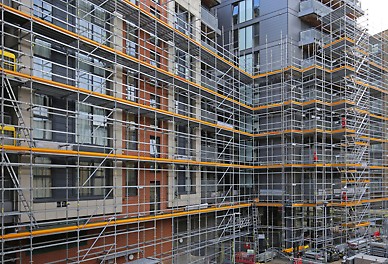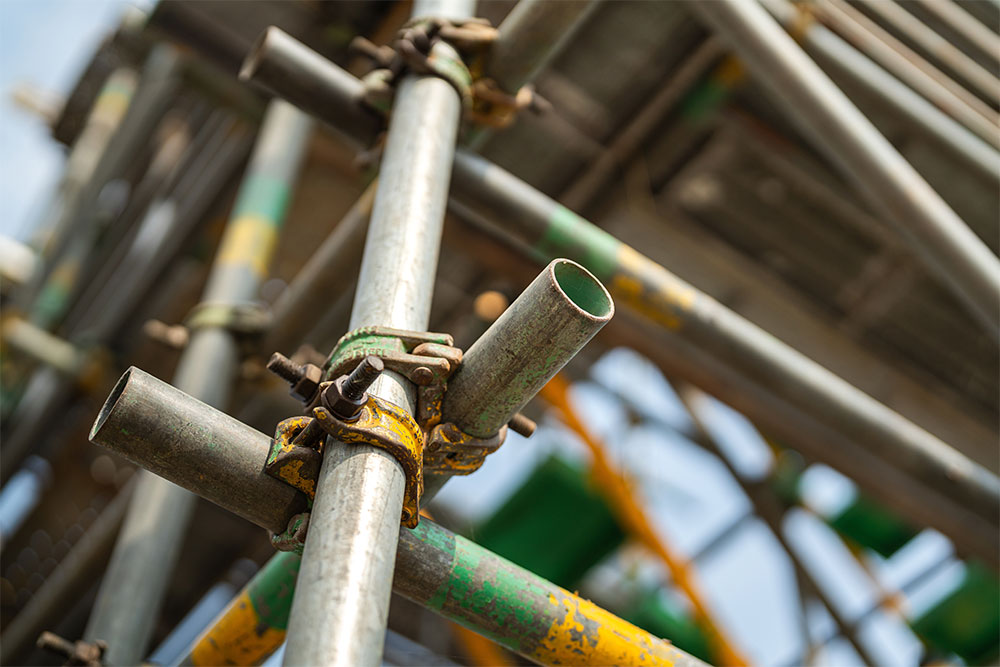Checking Out the Different Kinds of Scaffolding Made Use Of in Construction Projects
The construction industry counts greatly on numerous kinds of scaffolding to satisfy certain project demands, each offering distinctive benefits and applications. Conventional structure scaffolding offers a tough structure for general jobs, while put on hold scaffolding is crucial for deal with high-rise frameworks. Various other alternatives, such as system and rolling scaffolding, satisfy efficiency and movement, specifically. Additionally, the cantilever alternative confirms invaluable in metropolitan atmospheres where room is constrained. Recognizing the subtleties of these scaffolding types is essential for enhancing safety and efficiency on construction websites, triggering a closer evaluation of their one-of-a-kind characteristics and applications.

Standard Structure Scaffolding
Traditional frame scaffolding is one of one of the most commonly used techniques in the building and construction industry as a result of its effectiveness and convenience. This system is composed of upright and straight frames that are assembled to create a secure system for employees and products. The primary elements consist of upright posts, horizontal journals, and diagonal braces, which with each other supply a solid framework that can sustain significant loads.
One of the crucial benefits of traditional framework scaffolding is its versatility to numerous building tasks, varying from household buildings to large industrial structures. The modular style allows for very easy setting up and disassembly, making it efficient for both lasting and short-term tasks. Additionally, the system can be personalized in elevation and width, suiting different building styles and website conditions.
Security is paramount in scaffolding applications, and typical frame systems are outfitted with guardrails and toe boards to avoid drops and guarantee employee protection. Routine assessments and adherence to safety and security guidelines are essential in keeping the honesty of the scaffold (Scaffolding). Overall, standard structure scaffolding continues to be an essential selection in the construction market, supplying a reputable platform for labor and enhancing total project efficiency

Suspended Scaffolding
Put on hold scaffolding offers a distinct option for building and construction projects that require accessibility to raised surfaces, particularly in circumstances where conventional structure scaffolding might be unwise. This kind of scaffolding is normally suspended from the roof covering or upper levels of a framework, making use of a system of sheaves, platforms, and ropes to develop a working space that can be readjusted to different elevations.
Among the primary benefits of suspended scaffolding is its flexibility. It can be conveniently repositioned or decreased to fit modifications in building needs, making it excellent for jobs such as home window installment, frontage job, and upkeep on skyscraper buildings. In addition, the minimal footprint of suspended scaffolding permits much better use of ground room in urban environments, where room is often minimal.
Security is a vital factor to consider in using put on hold scaffolding. Proper rigging and anchoring systems should be used to ensure stability and stop crashes. Operators must likewise be learnt the safe usage of this devices. On the whole, put on hold scaffolding gives a effective and reliable solution for accessing hard-to-reach locations in various building and construction situations, enhancing both productivity and security on website.
System Scaffolding
System scaffolding, usually considered as a modern option in the scaffolding market, is composed of pre-engineered elements that can be promptly set up and adapted for various building and construction projects. Scaffolding. This type of scaffolding is identified by its modular style, which enables adaptability and effectiveness on work websites, fitting architectural demands and different elevations
Generally made from high-strength steel or aluminum, system scaffolding offers enhanced resilience and stability. The components consist of vertical posts, straight ledgers, and diagonal dental braces, which interconnect firmly, making certain a robust structure. The style typically integrates scaffolding supplies standardized fittings, streamlining setting up and disassembly processes, therefore reducing labor time and expenses.

Rolling Scaffolding
Moving scaffolding is a flexible alternative to standard set scaffolding, developed for flexibility and ease of usage on building and construction websites. This kind of scaffolding contains a system sustained by frameworks with wheels, permitting employees to quickly move it as needed. The mobility feature considerably enhances efficiency, as it lessens downtime related to setting up and dismantling fixed scaffolding.
Generally created from lightweight materials such as light weight aluminum or steel, rolling scaffolding offers a sturdy yet portable option for tasks calling for regular repositioning - Scaffolding. It is particularly beneficial in jobs such as paint, drywall installment, and electric job, where access to different heights and locations is required
Safety is paramount in rolling scaffolding layout, with functions such as securing wheels to stop unplanned movement when in usage, and guardrails to safeguard employees from falls. In addition, lots of designs are adjustable in elevation, fitting numerous project demands.
Cantilever Scaffolding

The layout of cantilever scaffolding generally includes making use of braces or arms secured to a structure or framework, making it possible for the system to extend outward securely. Security is vital; therefore, these scaffolds should be engineered to hold up against environmental conditions and different loads. Routine evaluation and upkeep are necessary to make sure structural integrity and worker safety and security.
Cantilever scaffolding is preferred for its adaptability and efficient usage of area, making it a popular selection in metropolitan environments where area constraints prevail. Additionally, it helps with easier accessibility a fantastic read to high elevations, inevitably adding to the overall performance of building projects. Just like all scaffolding look at this site kinds, proper training and adherence to security standards are important for workers using cantilever scaffolding.
Conclusion
To conclude, the varied kinds of scaffolding made use of in building and construction jobs each serve distinctive functions tailored to certain site needs. Conventional frame scaffolding offers security, while put on hold scaffolding provides convenience for raised tasks. System scaffolding helps with fast assembly, and rolling scaffolding improves flexibility for differing job settings. Cantilever scaffolding successfully attends to barriers in urban settings. Recognizing these scaffolding types is important for maximizing safety and security and productivity in building, eventually contributing to the successful completion of jobs.
Standard structure scaffolding offers a tough structure for basic jobs, while suspended scaffolding is necessary for job on high-rise structures.Rolling scaffolding is a functional choice to traditional set scaffolding, designed for flexibility and ease of usage on building and construction websites. As with all scaffolding kinds, correct training and adherence to security criteria are critical for workers making use of cantilever scaffolding.
Standard framework scaffolding provides stability, while put on hold scaffolding uses convenience for raised tasks. System scaffolding facilitates fast setting up, and rolling scaffolding improves movement for varying work environments.